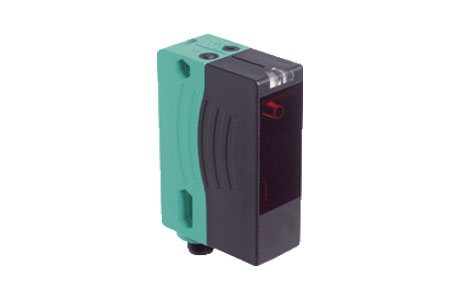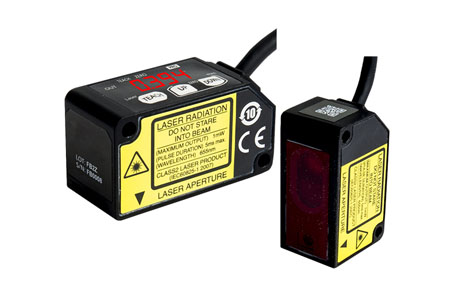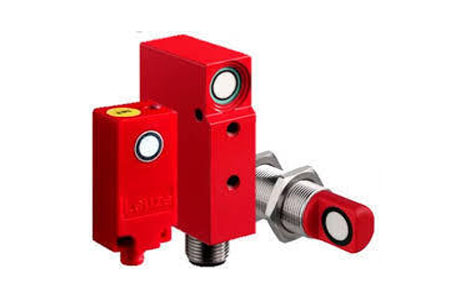Types of Distance Sensors: Laser vs. Ultrasonic
Introduction
When it comes to measuring distance accurately, choosing the right sensor is crucial. Two popular options are the laser sensor and the ultrasonic sensor. Laser sensors use laser beams for precise distance measurements over long distances. They are ideal for applications that require precise measurements over large distances.
Ultrasonic sensors measure distance by analyzing sound wave bounce-back time. They are versatile and suitable for various proximity sensing and object detection applications.
In this article, we compare and contrast laser and ultrasonic sensors. We explore their distance-measuring principles, accuracy, and precision. We examine their performance in different environments and consider cost and integration.
What is a Distance Sensors?
Distance sensors measure the distance between the sensor and an object accurately. They are used in industries for automation, object detection, and precise distance measurements.
Laser sensors and ultrasonic sensors are two common types of distance sensors. These sensors are essential in robotics, construction, surveying, and other distance-dependent fields.
Types of Distance Sensors: Laser vs.Ultrasonic
Various types of distance sensors are available, using different technologies for measurement.
Laser sensors use laser beams for precise, long-range distance measurements.
Ultrasonic sensors use sound waves and work well for short to medium-range distances.
Selection depends on accuracy, range, and environmental considerations.
Laser Distance Sensors
A. Explanation of laser-based measuring principle
Laser sensors use emitted laser beams for measuring distances. The sensor emits a laser beam toward the target object.
The beam reflects back to the sensor after hitting the object’s surface. The sensor measures the time for the laser beam to travel and return.
Based on this time measurement, the sensor calculates the distance accurately. This laser-based measuring principle allows for precise distance measurements.
B. Advantages and disadvantages of laser distance sensors
Advantages of Laser Distance Sensors:
High Accuracy:
Laser sensors are known for their high accuracy in distance measurements. Laser sensors provide precise and reliable results. They are ideal for applications that require exact measurements.
Their accuracy ensures dependable data for critical tasks. These sensors find application in various industries and fields where precision is essential.
The laser beam emitted by the sensor allows for a focused and narrow measurement area.
Long-Range Capabilities:
Laser distance sensors excel in long-range measurements. They accurately measure distances over significant distances.
These sensors find applications in aerial mapping, object tracking, and large-scale surveying. They provide precise data for decision-making and planning.
Industries like construction and transportation benefit from their long-range capabilities.
Non-Contact Measurement:
Laser distance sensors offer non-contact distance measurement capabilities. They can measure distances without physically touching the object. This non-contact measurement method minimizes the risk of damage or interference.
Disadvantages of Laser Distance Sensors:
Higher Cost:
Laser distance sensors can have higher costs compared to other sensor types. The advanced technology and precision they offer contribute to the higher price.
The sensor’s performance justifies the cost. It ensures precise data for critical applications. Consider the long-term benefits and quality assurance before making a purchasing decision.
Weather Sensitivity:
Adverse weather conditions impact laser sensors’ performance. Rain, fog, or dust can interfere with the laser beam.
This interference can affect measurement accuracy and reliability. Consider environmental factors when selecting outdoor sensors.
Choose weather-resistant sensors for optimal performance. Regular maintenance and cleaning are crucial for consistent results.
Ensure sensors can withstand challenging weather conditions. Proper care and upkeep ensure reliable measurements in various environments.
Limited Surface Compatibility:
Laser distance sensors may encounter limitations with certain surface materials. Transparent or reflective surfaces can hinder accurate measurements.
Consider surface properties when selecting sensors for challenging materials. Certain materials like transparent or reflective surfaces can pose difficulties.
Alternative sensor options may be necessary for accurate measurements. Understanding sensor compatibility with different surfaces ensures reliable results.
C. Laser Sensor Applications
Construction:
Laser distance sensors are essential tools in the construction industry. They provide precise measurements for surveying, leveling, and aligning structures.
Construction professionals rely on laser sensors for accurate distance calculations. These sensors enhance productivity, efficiency, and accuracy on construction sites. They aid in tasks such as layout planning, verifying dimensions.
Robotics and Automation:
Distance sensors are integral to robotics and automation. They enable navigation, obstacle detection, and object recognition.
Robots use these sensors to perceive their environment and make informed decisions. Distance sensors help robots navigate safely and avoid collisions.
They enhance the autonomy and efficiency of robotic systems. In automation Products applications, these sensors contribute to precise positioning and material handling.
Industrial Manufacturing:
Laser distance sensors are instrumental in industrial manufacturing. They play a crucial role in quality control, dimensional inspection, and position monitoring.
Manufacturers rely on these sensors to ensure product accuracy and consistency. They enable precise measurements of components and parts during production.
Laser distance sensors contribute to efficient and reliable manufacturing processes. They aid in verifying dimensions, detecting deviations, and maintaining proper positioning.
Logistics and Warehousing:
Laser sensors are essential in logistics and warehousing operations. They facilitate efficient inventory management and automated material handling.
These sensors contribute to accurate package dimensioning and volume calculations. Laser sensors aid in optimizing storage space and streamlining warehouse processes.
They enable automation systems to accurately identify, sort, and track items.
Mining and Excavation:
Laser distance sensors are utilized for mine mapping, slope monitoring, and excavation control.
Laser distance sensors play a vital role in mining and excavation operations. They are used for precise mine mapping, slope monitoring, and excavation control.
Laser sensors enable accurate measurement and monitoring of terrain profiles and slopes. They aid in ensuring safe and efficient excavation processes.
Geographical Surveying:
Laser sensors play a significant role in geographical surveying. They assist in land surveying, topographical mapping, and monitoring geological changes.
Laser sensors provide accurate measurements of land features, elevations, and distances. They enable the creation of detailed topographic maps and digital terrain models.
Vehicle Guidance:
They enable accurate distance measurement and obstacle detection. Laser sensors help autonomous vehicles navigate their surroundings with precision.
They detect objects, determine their distances, and assist in safe navigation. These sensors enhance the reliability and safety of autonomous vehicle operations.
Ultrasonic Sensors
A. Explanation of the ultrasonic-based measuring principle
Ultrasonic sensors use ultrasonic sound waves to measure distances accurately. Here’s how they work:
Sound Wave Emission: Ultrasonic sensors emit high-frequency sound waves toward the target object.
Wave Reflection: The sound waves bounce back or reflect off the object’s surface.
Time Measurement: The sensor measures the time it takes for the sound waves to travel to the object and return.
Distance Calculation: Using the speed of sound, the sensor calculates the distance based on the measured time.
B. Advantages and disadvantages of ultrasonic sensors
Ultrasonic sensors offer several advantages and have certain disadvantages. Let’s explore them:
Advantages of Ultrasonic Sensors:
Non-Contact Operation:
Ultrasonic sensors use sound waves to measure distances without physical contact. The sensor emits high-frequency sound waves and measures the time it takes for the waves to bounce back.
By analyzing the time delay, the sensor calculates the distance accurately. This non-contact operation ensures the object’s integrity and minimizes the risk of damage.
Ultrasonic sensors are commonly used in applications where contact may not be feasible. They are ideal for measuring distances in various industries, including manufacturing, and robotics.
Wide Range:
Ultrasonic sensors offer a wide measurement range, accommodating various distance measurement needs. They can accurately measure distances from a few centimeters to several meters.
This wide range makes them versatile and applicable in a wide range of industries and applications. Their wide range of capability provides flexibility and adaptability in diverse scenarios.
Versatility:
Ultrasonic sensors offer versatility in their applications, serving various purposes. They excel in object detection, accurately sensing the presence or absence of objects.
Ultrasonic sensors excel in distance measurement, providing precise measurements across different ranges. They are commonly used for liquid-level sensing.
Cost-Effective:
Ultrasonic sensors offer cost-effectiveness compared to other distance sensing technologies. They provide reliable performance at a more affordable price.
Choosing ultrasonic sensors can help organizations save costs without compromising functionality. Their affordability makes them accessible for various applications and budgets.
Disadvantages of Ultrasonic Sensors:
Limited Accuracy:
Ultrasonic sensors have limitations in accurately measuring very small distances. These limitations arise from factors such as beam width and echo variations.
Ultrasonic sensors may not provide precise measurements for very small distances. Alternative sensors may be better for precise measurements of small distances. Other sensor options may be more suitable for accurate measurements of short distances.
Environmental Factors:
Temperature, humidity, and acoustic interference can affect the performance of ultrasonic sensors. Environmental factors can impact the accuracy of ultrasonic sensors.
Material Compatibility:
Soft or irregular surfaces can absorb or scatter ultrasonic waves, impacting measurement reliability. Certain materials may interfere with ultrasonic waves, affecting the accuracy of measurements. Certain surfaces can impact ultrasonic measurements, making material compatibility crucial.
C. Ultrasonic Sensors Applications
Here are some key areas where ultrasonic sensors are suitable:
Industrial Automation:
Ultrasonic sensors enable object detection in industrial automation systems, enhancing efficiency. Automation systems rely on ultrasonic sensors for object detection, enhancing productivity and safety.
Parking Systems:
Ultrasonic sensors enhance parking systems by detecting vehicles and measuring distances accurately. It optimizes parking space usage by efficiently detecting vehicles.
Accurate vehicle detection and distance measurement are achieved with ultrasonic sensors. It plays a crucial role in maximizing parking space efficiency.
Proximity Sensing:
Ultrasonic sensors offer reliable proximity detection for collision avoidance, security, and gestures. Collision avoidance, security, and gesture recognition benefit from ultrasonic proximity sensing.
Liquid Level Measurement:
Ultrasonic sensors accurately measure liquid levels in tanks, containers, and pipelines. Accurate liquid level monitoring and control are achieved using ultrasonic sensors. Ultrasonic sensors ensure precise measurement and control of liquid levels in various applications.
Robotics:
Ultrasonic sensors are vital for robot navigation, obstacle detection, and distance measurement. Autonomous robots and drones rely on ultrasonic sensors for navigation and obstacle avoidance. It enables precise distance measurement and obstacle detection in autonomous robots and drones.
Medical Devices:
Ultrasonic sensors enable non-invasive imaging of internal body structures in ultrasound imaging. Medical devices utilize ultrasonic sensors for accurate and detailed imaging in various applications. It enables non-invasive visualization of internal organs and tissues in medical imaging.
Home Automation:
Ultrasonic sensors play a pivotal role in home automation by accurately detecting motion. It enabling various smart features, including enhanced security measures. automated lighting control for energy efficiency. And intelligent occupancy detection for optimal energy-saving applications.
Factors to Consider in Choosing the Right Sensor
Measurement Range Requirements:
Measurement range is crucial when selecting a distance sensor for accuracy. Consider maximum and minimum distances required for your application.
Choose a sensor that accurately covers the desired measurement range. Ensure the sensor meets your specific range requirements.
Accuracy and Precision Needed:
The accuracy and precision of distance measurements are critical, depending on the application. Determine the level of accuracy and precision required for your application.
Consider error tolerance and required detail when choosing a sensor. Ensure the sensor provides the needed accuracy and precision.
Environmental Conditions and Surface Properties:
Environmental conditions and surface properties affect distance sensor performance significantly. Temperature, humidity, dust, and vibration impact sensor accuracy and reliability.
Reflective or transparent surfaces can affect distance sensor detection accuracy. Choose a sensor compatible with expected environmental conditions for optimal performance.
Consider temperature tolerance, dust resistance, moisture resistance, and vibration handling. Evaluate sensor suitability for reflective or transparent surface distance measurements.
Ensure optimal sensor performance by considering these factors in your application.
Cost Considerations:
Budget is crucial when choosing a distance sensor for cost-effectiveness. Assess overall costs, including purchase, installation, maintenance, and calibration.
Consider long-term expenses and support requirements for informed decision-making. Balance cost with desired performance and features for an optimal choice.
Integration with Existing Systems or Microcontrollers:
Compatibility and integration are vital when considering existing systems or microcontrollers. Check if the sensor’s communication interfaces align with your existing infrastructure.
Evaluate the ease of integration, software libraries, and vendor support for compatibility. Seamless integration is crucial for the successful implementation of your application.
Conclusion:
Choosing the right distance sensor is crucial for accurate measurements. Laser sensors offer high accuracy and long-range capabilities for precise measurements.
Ultrasonic sensors provide non-contact operation and versatility in various applications. Consider range, accuracy, environment, surface, cost, and integration when selecting a sensor.
Both sensors contribute to automation, efficiency, and safety in multiple industries. Understand principles, advantages, disadvantages, and applications to make an informed decision. Select the right distance sensor to meet your measurement needs effectively.






